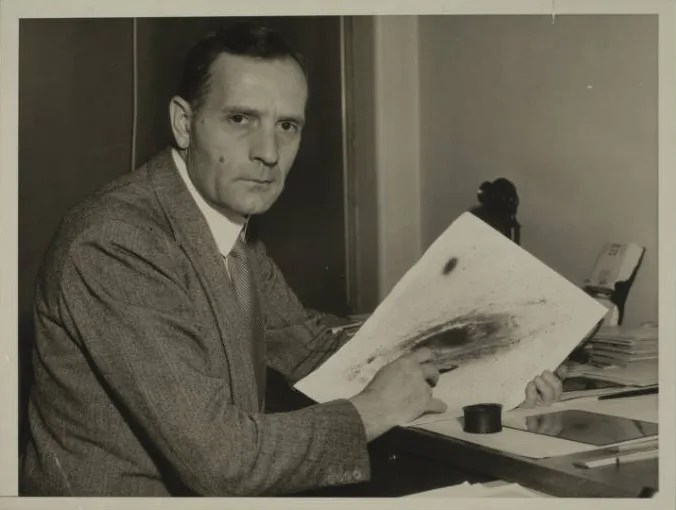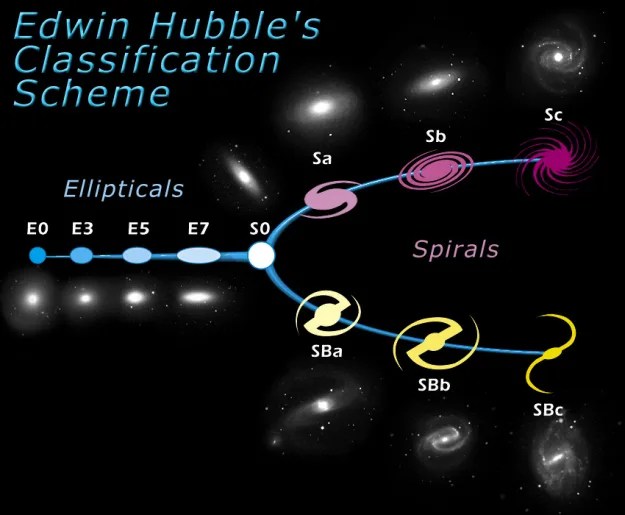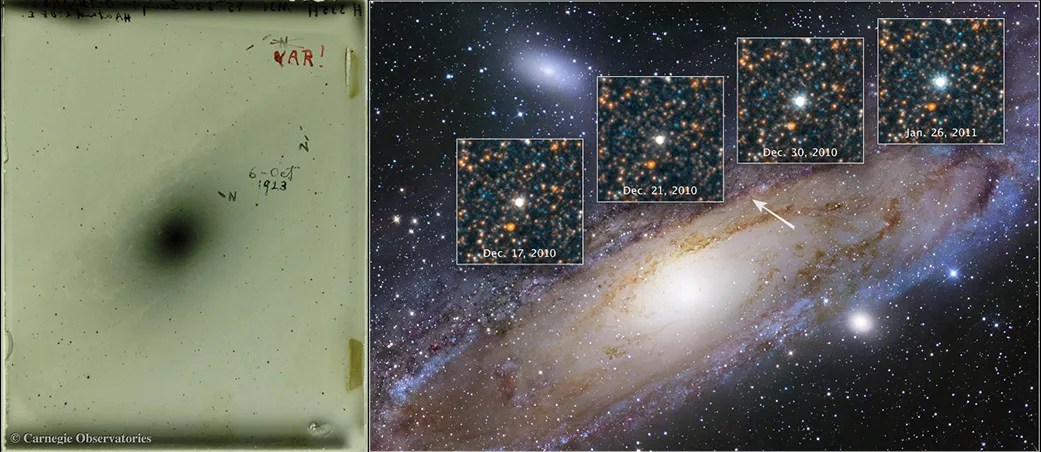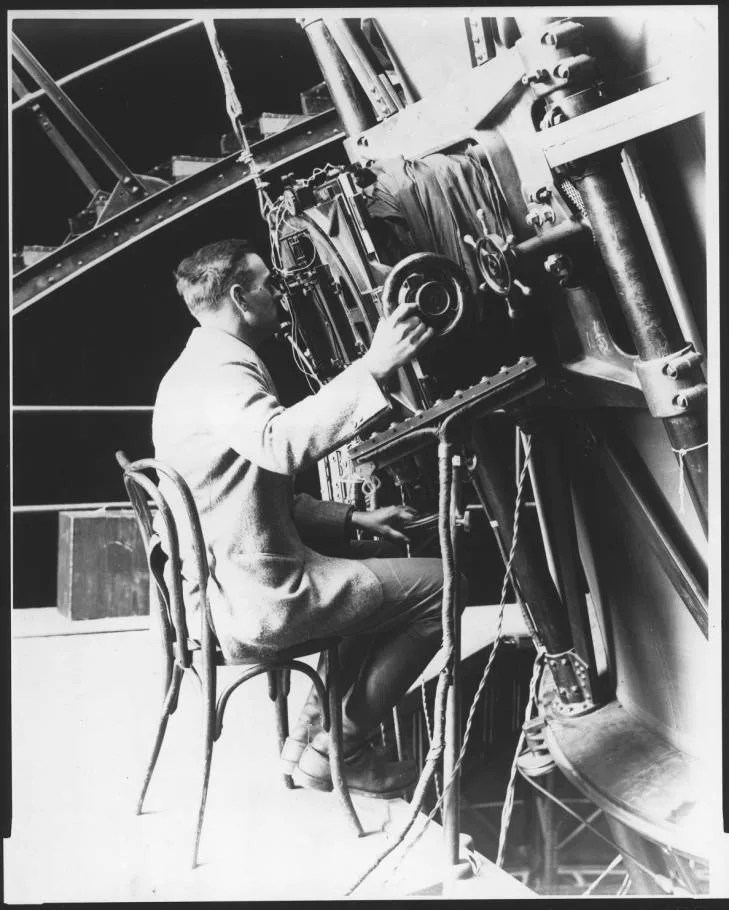
Edwin Hubble
Astronomer
Overview
The Hubble Space Telescope has given humanity an aperture to the universe for more than three decades. Its discoveries have fundamentally enhanced our understanding of the cosmos. This legacy reflects the work of the telescope’s namesake, renowned 20th century astronomer Edwin Powell Hubble. Like the Hubble Space Telescope, Edwin Hubble’s discoveries transformed the frontier of scientific knowledge. His work took us beyond the Milky Way and placed us in an ever-expanding universe with a myriad of galaxies beyond our own.
The Makings of a Stellar Pioneer
Born on November 20, 1889 in Marshfield, Missouri, Hubble spent his youth honing athletic skills in basketball, football, baseball, track, and boxing, while mentally feeding his curiosity through science fiction novels. Hubble’s innate fascination with the world around him foretold a lifetime of exploration. He entered the University of Chicago in 1906 as an undergraduate, earning a bachelor’s degree in mathematics and astronomy. He briefly deviated from his path of exploration, largely fueled by his father’s expectations, to study law at Oxford University as a Rhodes Scholar. But his deep longing to pursue a career in the sciences outweighed his father’s visions, and Hubble switched gears and obtained a Ph.D. in astronomy from the University of Chicago in 1914, setting his focus on the heavens.
Seeing the Cosmos Through a New Lens
Destined for the cosmos, Hubble’s journey led him to Mount Wilson Observatory in California and the 100-inch Hooker Telescope, the world’s largest at the time. Hubble used the 100-inch telescope to observe faint, fuzzy, cloud-like patches of light broadly labeled nebulae. His observations brought these fuzzy patches into focus, and in the process transformed the field of cosmology.
Up until the early 20th century, our perception of the cosmos fell within the bounds of the Milky Way. Although astronomers speculated about the existence of other galaxies in our universe, they had no observable evidence of them. It wasn’t until Hubble pointed the Hooker Telescope at the constellation Andromeda that our perspective shifted.
Hubble studied what was then known as the Andromeda Nebula, an object that for centuries appeared as an elongated cloud of light. In 1923, he resolved individual stars in this “nebula.”
Hubble’s continued observations of Andromeda resulted in one of the most transformative discoveries in cosmology. He uncovered his first Cepheid variable star, a type of star used to measure distances in space by how it changes brightness. A Cepheid variable star’s intrinsic brightness is directly related to its cycle from bright to dim and back to bright again. By charting the changes in these stars, Hubble discovered that Cepheid variable stars in Andromeda were much farther away than those in the Milky Way. This contrast in distance led Hubble to believe the Andromeda Nebula was a galaxy in its own right. Hubble used this technique to study other so called “nebulae” in the universe, and concluded that millions of galaxies existed beyond our own.
Hubble used his unique vantage point to compare galaxies with one another by studying their physical properties. Focusing on the visual appearances of galaxies, Hubble devised what is now the most influential system for classifying them: the Hubble Classification Scheme. This method of classifying galaxies arranges them in two main categories based on their shapes – elliptical or spiral – and is subdivided based on specific characteristics of each galaxy. Although simple in nature, this sequence helped lay the groundwork for understanding galactic evolution, and ultimately the formation of the universe.

By 1929, Hubble had completely reimagined our place in the universe; not only was it home to millions of other galaxies, but the universe itself was expanding as well. Contrary to the previously held view of a static universe, Hubble ultimately proved that galaxies are, in fact, moving away from us. By studying the light emitted from various galaxies, Hubble discovered that the light appeared displaced toward the red end of the spectrum. It became apparent that our universe was ceaselessly expanding outward, and all galaxies housed within it were moving away from one another. This phenomenon, known as redshift, reveals that the farther a galaxy is away from us, the redder its light will appear. Hubble also demonstrated that galaxies farther away from us are receding faster than those nearby – a fundamental observation now known as Hubble’s Law. The idea of an expanding universe is a key underpinning of the Big Bang Theory. Hubble’s observations provided the earliest insight into the origins of our universe.
Reaching New Heights

From one man’s glimpse into the heavens to humanity’s universal quest to understand the unknown, Edwin Hubble’s contributions to cosmology have pushed humanity to the ultimate edge of the cosmic frontier. Today, the Hubble Space Telescope carries his name and enduring legacy with pride, as it searches for the questions we have yet to ask and the answers still waiting discovery.
Soaring high above Earth, removed from the planet’s atmosphere, the Hubble Space Telescope now serves as our window to the universe, upholding Edwin Hubble’s vision to explore as far as our curiosity will take us. Through his words, Edwin Hubble captures the essence of exploration that lives on through this technological marvel: “The search will continue. Not until the empirical resources are exhausted, need we pass on to the dreamy realms of speculation.”

























